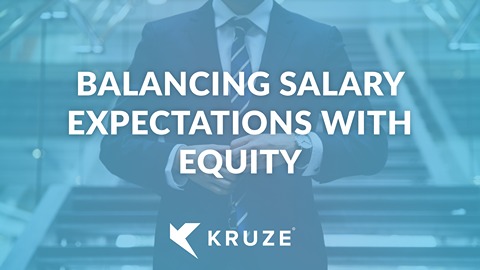
Our clients collectively raised over $3 billion in early-stage VC funding in 2023 - and unfortunately we saw a number of down rounds. A down round can be very painful for founders, employees and even VCs, so we published this guide to try to help founders navigate one.
The VC market is still investing in 2024, but it’s not an easy time; the startup ecosystem is still grappling with the aftermath of the 2021 VC bubble and a depressed tech stock market. Many startups are finding themselves needing to raise capital in less than ideal circumstances, leading to a significant increase in downrounds. According to data from Carta, the cap table provider, approximately 20% of priced funding rounds for established startups are downrounds. While the numbers among our clients are somewhat less alarming, we are still seeing downrounds rising among our customers.
In our experience, the companies and founders most likely to survive downrounds are ones who communicated regularly with their investors (see our investor update template), who have a strong plan to come out of the downturn, who are in an industry with strong prospects, and who picked great initial investors. Admittedly, many of those points are difficult to influence retroactively, so let’s give you information on how to actually deal with one.
What is a downround?
A downround is a funding round in which a startup raises capital by selling its shares at a lower valuation than in the preceding fundraising round. So the new round’s pre-money valuation is lower than the post-money valuation of the prior round. This means that the company is worth less now than it was after the last financing event.
Obviously this has some significant motivational and morale issues for founders, employees, and investors. It can also be a negative signal to the market if the press is not well managed or if competitors make a big deal of it.
But it also comes with serious financial consequences due to the special types of preferred stock investors purchase, and the way that employee options work. We’ll get more into these, and other, considerations and side effects of a downround, but first, let’s talk about why some founders end up facing a decrease in valuation.
WHO FEELS THE MOST PAIN IN A DOWN ROUND?
A downround means the company is still worth funding but, unfortunately, not to the degree everyone had hoped for. So who feels the most pain during a venture capital backed startup’s funding down round?
Founders do. The one immutable law which applies to VC backed startups in a down round is that founders are always the ones to take the dilution. When there is a down round, VCs have the ability to protect their ownership position by writing a new check. They can also put more money into the company and recut the cap table, but founders, unless they’re already very wealthy from prior success, are often unable to write another check.
Factors leading to a down round
Several factors can trigger a down round, including:
Massive market drop in tech market valuations: This is exactly the scenario many companies that raised in 2021 are facing: tech valuations have dropped by as much as 20x in some sectors. This means that many founders are nearing the end of their runway with no hopes of achieving a flat to increased valuation.
Raising too much too soon: Some startups might have rushed their fundraising rounds, going for a Series B just 3 or 4 months after a Series A, for example. While this quick fundraising might have seemed beneficial in the short term, it often doesn’t leave enough time to hit the substantial growth metrics and milestones needed to justify a strong subsequent round. As a result, when it comes time to raise a Series C round, these companies are finding it challenging to justify an increased valuation. Without the necessary performance metrics to support an up round, they face the prospect of a down round Series C, if they can raise at all.
Sector specific downturns: Downturns specific to a startup’s sector can reduce investor appetite, leading to a decrease in valuations, even for companies that are performing well.
Financial underperformance: If a startup’s financial results fall short of projections or other milestones are missed, investors may demand a lower valuation in the next funding round.
Company specific issues: Sometimes a specific company falls out of favor for reasons unique to that business. It could be that unusually high burn rates spooked new investors, the executive team had turmoil, scary new competitors appeared, etc.
By far, in 2023, what we are seeing as the most common reason startups are having to do down rounds is the market drop has dramatically reduced valuations. This means that many companies that have achieved their growth metrics and hit their milestones are still worth less now than they were two years ago.
Strategies to avoid a down round
Of course, as a rational founder, you probably want to avoid a down round. Beyond finding a new investor to fund you at the same or higher valuation, here are some strategies to avoid one:
- Lots of structure. This isn’t particularly advisable, and be wary if one of your investors is pushing for this solution. This strategy is really only available to solid companies with strong investor support. Very rarely, we will see certain investors (mainly late-stage ones) employ financial engineering to put more capital into a company at a flat valuation. You may see this structure in a down round anyway, but it will usually be preferred stock with a high liquidation preference, participation rights (participating preferred), and maybe a paid in kind dividend. We discuss these structures below, but the net is that they are pretty aggressive terms that a well-performing startup should avoid.
- Bridge financing. We’ve seen this quite a bit recently. Companies that have good relationships with existing investors can sometimes get those VCs to put in a bridge round to keep the company growing until a point where it can raise money at better terms. This is usually structured as a convertible instrument, like a SAFE or convertible debt. And the founders need to have a very, very well-developed financial model that shows how the bridge isn’t actually a bridge to nowhere – as in, the company has a solid plan to use the money to get to a stronger place where it will be highly likely to raise at a higher valuation.
-
Extending the runway enough to avoid needing to raise soon. This is a difficult item, and most founders at companies facing a down round will need to make aggressive changes to lengthen the runway. Furthermore, most founders have already taken at least some steps to extend the runway. That being said, here are some common ways clients we work with have pushed out their cash-out date and cut their burn:
- More revenue. Growing revenue, or getting customers to prepay, are a great strategy to put cash on the balance sheet. Of course, you are probably already doing everything you can here, but we have worked with some founders who have pulled revenue forward by discounting, aggressive sales, calling in favors, etc.
- Services revenue. Some founders we’ve worked with have extended their runway by getting services-based revenue – sometimes consulting work, development work, one-off engineering, etc. The danger with this strategy is that one-off consulting revenue does not help the startup advance its true value-generation work, like building product, getting on-target sales, etc. And it can really, really distract from doing the things needed to build a valuable startup – VCs, rightfully, don’t value services businesses very highly. However, if your startup needs to make it through a difficult time, services revenue can be one way to bridge the gap.
- Cutting expenses. This is the obvious, and often painfully necessary, step in extending runway. Since the majority of expenses at a startup are headcount, this means making the difficult decision to conduct layoffs. Enough revenue growth and cost cuts can make a profitable company, although this doesn’t necessarily mean that the company is worth as much as its last round of funding.
- Venture debt. Venture debt isn’t really a great option, in our opinion, as these investors are not looking to prop up overvalued or failing companies, but instead want to finance hot businesses that have strong balance sheets. However, it may be possible to raise some receivable or revenue-based funding if your startup has solid customer contracts, low churn, and has a rational expense structure. But I wouldn’t recommend setting up a bunch of pitches with high-quality venture debt funds, as they are unlikely to be a backstop on a company that really should do a downround.
As a founder taking aggressive steps to avoid a down round, make sure you are thoughtful about where the strategies you choose get you. Are you building a more valuable company? Are you making a bridge to somewhere where the company can get funding or be sustainable?
What to watch out for
Always make sure you’ve got experienced advisors – especially lawyers – if you are going to raise money at a lower valuation. Venture investors’ claws come out during down rounds, and you want to be prepared to protect the company’s – and your – interest. There are a lot of fancy names for the tricks that VCs will play at a down round; be prepared. Here are some things to watch out for:
Anti-dilution provisions: An investor safeguard that hurts during a down round
VC investors purchase preferred shares. These shares have provisions that protect their stakes from being diminished in value through anti-dilution provisions. These provisions adjust the conversion rate of preferred shares into common shares during a down round, thereby reducing the impact of dilution on the investor at the expense of other shareholders. There isn’t much you can do about these provisions if you are faced with a downround – it’s best to try to not let your investors have them in the first place. DLA Piper, a well-known law firm, has a good piece on these provisions here.
There are typically two types of anti-dilution protections: ‘full-ratchet’ and ‘weighted-average.’
Full ratchet: This method adjusts the conversion price of the existing preferred shares to the price at which the new shares are issued in the down round, irrespective of the number of new shares issued. While this provides robust protection to the investor, it could lead to severe dilution for the founders and other stakeholders. In effect, the existing investor gets more shares, keeping the valuation of their existing ownership the same.
Weighted average: This method also adjusts the conversion price of the existing preferred shares. It takes into account both the price and the number of new shares issued in the down round. It is generally seen as a fairer method as it balances the interests of existing investors and new shareholders, mitigating the dilution impact on founders and early stakeholders. But it still hurts founders, option holders, etc.
The math can get pretty complicated with the anti-dilution protection – it’s probably worth a stand alone article. Stay tuned.
Even if you have these provisions, you can try to negotiate them away. It’s common for founders to engage in discussions with investors to lessen or entirely waive the anti-dilution adjustments. An essential consideration here is whether the management, who typically hold substantial common stock, will be sufficiently motivated by their equity stake after financing to dedicate their efforts toward running the business. However, it’s not usually a good strategy to make the investors think that you will lose motivation to work on the business; this often results in them walking away from the company instead of funding a down round.
Pay-to-Play provisions: Continued investor support – or else!
Pay-to-play provisions are contractual clauses that incentivize, and sometimes force, existing investors to participate in the new funding round. A pay-to-play provision is a clause that tries to really, really make existing investors invest in a subsequent round of financing on a pro rata basis. If they do not participate, they face penalties, often in the form of their preferred shares converting to common shares (or sometimes less powerful preferred shares), which usually have fewer rights and lower seniority in terms of liquidation preference.
While these provisions can ensure the continued financial support from existing investors, they can be seen as punitive, especially in a down round scenario where the investors may already face a loss on their investment. A big issue for founders is that they can get caught in-between investor groups if a pay-to-play is invoked. When you are trying to save your company, having to mediate between powerful VCs who are trying to screw each other over isn’t where you really want to be spending your time.
Cramdowns: A brutal but sometimes necessary strategy during a down round
A cramdown is a financing event where new investors significantly dilute the ownership stakes of existing shareholders, especially when those existing shareholders are prior investors who can’t or choose not to participate in a down round. Cramdowns effectively “cram down” the ownership percentage and influence of existing shareholders, and they are brutal on the existing owners. Sometimes they are necessary to get the funding needed to keep a startup going, but they aren’t pretty.
First of all, a cramdown is going to sour the relationship between existing, non-participating, investors and new investors. And some investors who choose to participate because of the cramdown are likely to get upset at the investors who proposed it, so it’s not going to make anyone happy.
Secondly, in a cramdown, founders’ common shares are significantly diluted. The effect on the founders can be substantial. Not only do they own a smaller percentage of the company, but the value of their shares may also decrease due to the lower valuation at which the new shares are issued. This could significantly diminish the potential return they might receive if the company is sold or goes public.
The same is true for option holders, especially for option holders who have exercised their shares and left the company. Those former employees are essentially getting wiped out. This is pretty brutal; these folks have paid money to exercise their shares, and often had tax bills associated with this as well.
Both former founders and employees getting wiped out or crammed down is something to approach very carefully. CEOs should think about the implications of this on the finances of their former associates, and realize that this can cause a negative market perception – it doesn’t look good. VCs who advocate for it need to realize that it’s not employee or founder friendly, and while “cleaning up the cap table” is often a necessary step, it’s not one to be taken lightly.
Sometimes you have to do what you have to do to save your startup
We just listed out some seriously painful things that can happen when you have to raise money at a lower valuation. But unfortunately, this is just reality in a down round. And if you have to do it, you have to do it. Let’s dig into some of the negative implications that can come out during or after a down round.
Negative implications of a down round
Keep in mind that all of the above – the anti-dilution protection, the pay-to-play and the cramdowns – will negatively impact some of your earlier supporters like seed investors, advisors who have shares, and common stockholders like founders and employees. These people are going to have less ownership, influence, and upside after a down round. Here are some of the negative impacts each group will have:
- Previous Investors
- Dilution: Cramdowns or the triggering of anti-dilution provisions can drastically reduce the percentage of company ownership held by previous investors.
- Decreased Influence: With reduced ownership comes diminished influence over company decisions, including those concerning strategic direction, hiring of key personnel, and potential exits. Investors may lose information rights or board seats; or they may no longer have enough skin in the game to care about helping the company.
- Markdowns: Professional investors may balk at having to mark down their investment’s value – realize that some VCs will have odd incentives if your startup is a huge percentage of their funds’ paper returns.
- Change in Share Class: In case of pay-to-play provisions or cramdowns where they don’t or can’t participate, preferred shareholders may be converted to common stock, losing their preferential rights.
- Option Holders
- Dilution: Just like with previous investors, option holders see their ownership stake diluted.
- Decreased Potential Returns: The economic value of their options might decrease, as each option now corresponds to a smaller fraction of the company.
- Strike Price vs. Share Price: If the new financing event occurs at a price lower than the strike price of the options, this can result in the options being ‘underwater’. This means the cost to exercise the options is greater than the market value of the shares. We’ll have an entire section on this topic.
- Employee Morale: Employees who’s options become underwater may question their dedication to the startup.
- Common Stockholders (Including Founders and Employees who have exercised options)
- Significant Ownership Dilution: Common stockholders are usually the most affected by dilution caused by a down round since they are last in line in terms of liquidation preference and don’t have anti-dilution protection.
- Loss of Control: Founders and other holders of common stock may lose some control over the company’s direction due to reduced voting power.
- Reduced Financial Upside: The potential financial gain upon a liquidity event is reduced as each share represents a smaller piece of the equity pie.
- Employee Morale: For employees who are common stockholders, significant dilution might lead to decreased morale and motivation, especially if their stock options fall underwater.
Understanding investor strategies in a down round
In a down round, it’s crucial to understand the strategies and expectations of existing and new investors and those who are reupping their investment.
Existing investor behavior
The decision for existing venture capitalists to participate in a down round is much more complicated than participating in a hot portfolio company’s follow-on financing. One key item to understand is that VCs have a limited amount of capital available to follow-on investments. VCs often have a finite amount of capital that they can allocate to follow-on investments, making the decision to participate in subsequent funding rounds a critical one.
In the case of a down round, this decision is even more consequential. VCs must also consider the potential dilution of their stake if they choose not to participate, especially if anti-dilution provisions are not in place. Pay-to-play provisions, while incentivizing the next investment, also force investors to do the math to understand if there will be subsequent rounds that are also subject to pay-to-play. If round isn’t enough capital to get the company to break-even, an exit or an up-round (or if the company is going to continue to struggle), then the NEXT round will also likely be a pay-to-play. So the VC isn’t just making a decision to invest money now, but also another slug of capital in the future. Do they want to put in money now if they know it’s at risk for a follow-on pay-to-play situation?
Furthermore, if the down round securities have terms favoring new investors, such as liquidation preferences or dividends, then the upside of the existing investment is lower – therefore, is it worth “defending” that prior investment?
And, heaven forbid if the initial investment was made out of a fund that is low on capital and the new investment is supposed to come out of a different fund. Each fund a VC firm raises usually has slightly (to vastly) different limited partners with different amounts invested – so there are serious fiduciary issues that come up when a VC invests “cross funds” in a down round.
However, choosing not to participate could mean losing influence over the company’s direction, especially if the new investors demand a greater say in the company’s operations. In addition, if the VC believes in the company’s long-term prospects and believes that the down round is merely a temporary setback, they might choose to participate to protect their initial investment and maintain their relationship with the company.
It’s also worth noting that existing investors have more information about the company, which can be both an advantage and a disadvantage. They are typically more familiar with the team, the business model, and the market, which should in theory enable them to make a more informed decision. On the other hand, they should also know if a company is not doing well, and run the risk of looking foolish if they throw good money after bad.
Therefore, the bar for participation in a down round is significantly high for existing VCs, often higher than in regular funding rounds. Every VC’s decision will depend on their assessment of the company’s potential, their capital limitations, their risk tolerance, and their strategic objectives.
How the preference stack influences Existing VCs Behavior
Later stage investors may have different preferences than early stage investors, which means that their motivations during a recapitalization may be quite different. Founders trying to pull together a round at a lower valuation need to understand the impact of a specific preferred share right - the liquidation preference.
Liquidation preferences are essentially a set of rights given to investors that lay down the order of payout during the exit of a startup. A simpler way to think about this would be to imagine a scenario where, upon exit, a VC has two options - they can either choose to receive an amount that corresponds to their ownership stake in the company, or they can opt to get back the total amount of their initial investment. Naturally, a VC would select the option which maximizes their return, even if that means acquiring all of the proceeds and leaving nothing for the founders and the employees.
These preferences “stack up” - forming what is called the preference stack. For many startups, the later stage investors have seniority, meaning that, at a small exit, they get paid back before the earlier stage investors.
In a scenario where a startup has raised multiple rounds, it is possible that later stage investors may prefer to sell the company a low valuation instead of doing a down round. This is because the later stage investors may sit high on the preference stack, so they will get their money back. However, earlier investors may be left with nothing in this case, so would prefer to recapitalize the company (and in a lot of cases wipe out or diminish the preference stack). In this situation, the founder may have some investors who want to push to sell the business at a loss to get their liquidion preference back, where as others may want to keep the company going and clean up the cap table. This can lead to a lot of drama, with the founder at the center.
New investors
Not many VCs come into new startups at a down round, let alone lead the down round. First of all, negotiating a down round is much, much more difficult than leading a normal, up round. Secondly, there is reputational risk associated with leading a down round. Let’s get into these dynamics so you understand what VCs might be thinking about when you ask them to lead a down round.
The lead VC typically plays a key role in defining the terms of the round, which in a down round scenario can be a particularly delicate task. The terms must be crafted in such a way as to protect the new investment and provide potential upside, while also being mindful of the potential dilution and its impact on existing shareholders. Achieving this balance can be difficult and may require tough negotiations, involving numerous legal and financial complexities. This is much more difficult in a down round, where various stakeholders have their investments value and influence reduced. This can also add to a lot higher legal bills, as down round terms are more aggressively negotiated vs. simple up round deal documents.
Additionally, the lead VC in a down round often finds themselves in the unenviable position of having to manage and align the interests of various stakeholders. This includes calming the concerns of existing investors and reassuring founders and employees, all while setting and communicating a new strategic direction for the company.
Beyond the pain of leading and negotiating a down round, one of the major concerns for new investors is the potential to upset various stakeholders, particularly the existing investors, founders, and employees of the startup. A down round often results in substantial dilution for existing shareholders, which can cause significant dissatisfaction and strain relationships. Founders may see their stakes and influence in the company diminish, while employees may find their options underwater, which can affect morale and even lead to talent departure.
No VC wants to be known as the VC who screwed over a founder or who crushed a bunch of employee options.
Given these concerns, many VCs prefer to avoid down rounds as a matter of principle.
Terms investors ask for in a down round
The terms investors get in a normal, up round are relatively easy to predict – most VCs take the previous preferred share documents and make minor tweaks. That’s not the same for down rounds. In down rounds, investors often ask for terms that are more customized (and punitive). Some of these terms are:
- Over 1x liquidation preference
- Participating preferred stock
- Dividend rights
- Pay-to-play provisions on subsequent rounds
One such term is the concept of a liquidation preference over 1x. Liquidation preferences are terms that let investors get their investment back, before other investors are paid out, in the event that the company exits for a less than stellar amount. With a high liquidation preference, new investors will get multiples of their invest back, before any other shareholders. For instance, with a 2x liquidation preference, an investor would get twice their investment back before others get anything. This can lead to a significant reduction in the potential returns for other stakeholders.
Some specific math as an example. Let’s say an investor invests $10M at a 2x liquidation preference, and ends up owning 20% of a startup. The startup is then sold for $25 million. Instead of getting 20% times $25 million ($5 million), the investor gets two times $10 million, or $20 million. The remaining $5 million is split between the other stockholders.
Investors may also seek to obtain participating preferred shares. These shares grant investors the right not only to receive their initial investment back (akin to a liquidation preference) but also to participate in the distribution of any remaining proceeds, as if their preferred stock had been converted to common. This provision allows the investor to benefit twice – hence the term “double dip” – and can result in them securing a high portion of any sale proceeds, often to the detriment of other shareholders.
An example would be if an investor invests $10M at a 1x liquidation preference into participating preferred shares, and ends up owning 20% of a startup. The startup is then sold for $25 million. Instead of getting 20% of $25 million ($5 million), the investor will get $13 million: their $10 million investment plus 20% of the remaining proceeds (20% times $15 million, or $3 million).
Furthermore, new investors might request dividend rights agreements in a down round. These stipulate the payment of a dividend on preferred shares, either as a fixed amount or a percentage of the original investment. Generally, we’ve seen these paid out as more preferred shares, which means the existing shareholders are more and more diluted over time (this is called a PIK preferred – a “paid in kind” dividend. This particular term is sometimes used to incentivize management to quickly sell the company, as their ownership decreases as time goes on.
The strategy of introducing a pay-to-play provision in a down round financing with the intention to wash out other investors in future financings indeed presents a unique dynamic in the venture capital ecosystem. An investor with significant financial resources and long-term interest in the company might use this strategy as a means to consolidate control. If they anticipate that the company will require additional funding in the future – and that some of the other investors will not be able to meet the pay-to-play obligations – they can use the provision to effectively dilute the stakes of these other investors. Watch out for pay-to-play provisions that are designed to impact subsequent rounds – your investors may end up playing a game of chicken, with your startup caught in the middle.
As new investors look to secure their investment in a down round, it’s important for founders and existing shareholders to comprehend the full implications of these terms. Similarly, reupping investors need to be aware of the trade-offs involved as they might have to accept these conditions to protect their existing stake. It’s important to work with an experienced law firm when negotiating down round provisions and terms.
Strategies to handle down rounds
Down rounds present significant challenges for startups, requiring serious negotiating skills and careful decision-making. The success of a company during a down round largely depends on its ability to communicate effectively, formulate and execute a sound business plan, negotiate deftly, and align the interests of all stakeholders. In this section, we will explore these key areas in detail, providing guidance on how to manage the complexities of a down round successfully.
- Communication
- Proactively adjusted company’s burn
- Strong business plan and financial model
- Be prepared to negotiate
- Understand your investors’ interests and aligning with shareholders
- Work with a great attorney
It’s crucial to uphold transparency, ensuring investors remain informed about the company’s current situation, reasons leading to the down round, and the strategic plan for recovery. Regular updates, open discussions, and timely responses to investors are key actions that demonstrate respect for investor relationships and can help maintain their confidence in your leadership and the company. Investors appreciate being kept in the loop and involved in the process, and clear, candid communication can help prevent misunderstandings, manage investor expectations, and maintain alignment on the company’s path forward.
For most startups, another key strategy to successfully close a down round is to proactively adjust the company’s burn rate. By reducing unnecessary expenses and increasing operational efficiency, startups can extend their financial runway, providing more time and flexibility to navigate the down round and execute their recovery strategy. This can also make the new capital raised go further, potentially enabling the company to reach important milestones that increase its value and make it more attractive for future funding rounds. A focus on financial discipline and efficiency demonstrates to investors that the company is committed to long-term sustainability, which can help build confidence and trust in the face of a down round. Of course, this is a painful decision and the impact to employees is not something that should be taken lightly. Additionally, if laid off employees ask to exercise their options, you may need to have frank discussions around the impact of the down round on their exercise price – consult with your lawyer.
Down rounds often instigate challenging negotiations, especially around valuations, ownership stakes, and future funding provisions. Being equipped to negotiate effectively is crucial, bearing in mind that your objective isn’t solely about securing necessary capital, but also about preserving relationships with your investors and positioning your company for a successful recovery post-down round. Coming prepared to conversations is even more important than it was when you first raised capital.
It’s vital to align stakeholder interests as much as possible. A down round, while challenging, also offers an opportunity to reassess and reaffirm the common objectives among founders, investors, and employees. Encouraging participation in this process can not only promote a sense of unity and shared purpose but also generate ideas and strategies that might have been overlooked otherwise. Different VCs will have different needs based on the situation with their funds - take the time to understand where they are coming from. Not all VCs will be fully transparent, especially if they are low on funds or if they think they are playing chicken with other investors, but it’s worth taking the time to understand their expectations. But make 100% sure you understand if your investors expect you to polish up the company for a quick sale, or push for profitability, or resume high growth and then raise an up round.
When embarking on a down round, engaging a seasoned legal and financial team is critical. They can provide invaluable advice and guidance, ensuring that you’re not only legally protected, but also well-prepared to address the financial complexities that come with down rounds. You also want to work with attorneys who can help you avoid situations that open you up to litigation - while you can’t really eliminate the risk of being sued, it’s good to know where you are creating risk. You’ll also want to run scenarios with your lawyer to understand the impact of various structures.
Conclusion: How to survive and thrive post-down round
Navigating a down round can be a tumultuous experience for any founder, but getting the capital in the door is only the first step. The real challenge lies in rebuilding post-down round, restoring market perception and reputation, rebuilding employee morale, and executing a long-term plan to get to a healthy position.
A company may not need significant operational or strategic changes if the down round was singularly the result of the previous round being done at too high of a valuation. However, VCs are likely to demand greater operational efficiency after a downround (i.e. some cuts).
Strategies to rebuild
Companies may need to streamline operations, focus on profitable segments, or reconsider their staffing. Again, it’s important to have a financial model that lays out how your startup will accomplish its goals with lower spend (you can find free financial models here).
Addressing employee morale
Employees are likely not feeling great after a down round. There have probably been layoffs, their stock options are probably underwater (or at least worth less money), and there is the feeling that the company has not done as well as everyone expected. Some items to address include:
- Stock options. Employees at startups expect stock options to be an important part of their compensation. Founders and the board need to quickly execute a stock option top off to avoid losing key employees
- Vision and Mission Reiteration. Remind employees of the company’s mission and vision. Reinforce the importance of their roles and how they contribute to achieving the company’s long-term goals.
- Explain the plan. Make sure employees know what the companies priorities are, and how they can help the business get onto solid footing.
Market perception and brand reputation
A down round could potentially leave a dent on your company’s market perception and brand reputation. Since they usually happen alongside layoffs, this is a legitimate issue to worry about. Regular updates showcasing the progress made and the effective implementation of the recovery plan will help rebuild stakeholder trust. A carefully devised public relations strategy can also assist in retelling your brand story from a perspective of resilience and adaptability. And don’t forget to think about customer and prospects opinions of your company. No business leader wants to purchase an important product or service from a company that is potentially going out of business, as they likely need the startup to stay in business to service the product!
Regular budget vs actuals
Founders need to carefully measure their financial progress and position after a down round. This not only helps keep the startup’s financials focused, but fosters investor confidence, enables prompt course correction, and improves future financial planning. Detailed budgeting and reporting provide transparency into the company’s fiscal health, facilitating early detection of possible problems.
Recurring investor check ins to align on goals
We already mentioned making sure you understand and are aligned with your investors’ expectations for the business after a down round - do they expect a reset, then a focus on achieving high growth? Or a push to profits? Or a quick exit via M&A? Check in regularly with your investors to make sure that their goals are still aligned with the company’s after the down round.
Don’t Just Survive, Thrive
Enduring a down round can indeed be tough, but it is not the end of the road. With an efficient recovery strategy, a resilient team, and a forward-looking approach, companies can leverage this challenge as a stepping stone towards renewed success. Remember, the key lies not just in surviving the down round but in thriving in its aftermath.















